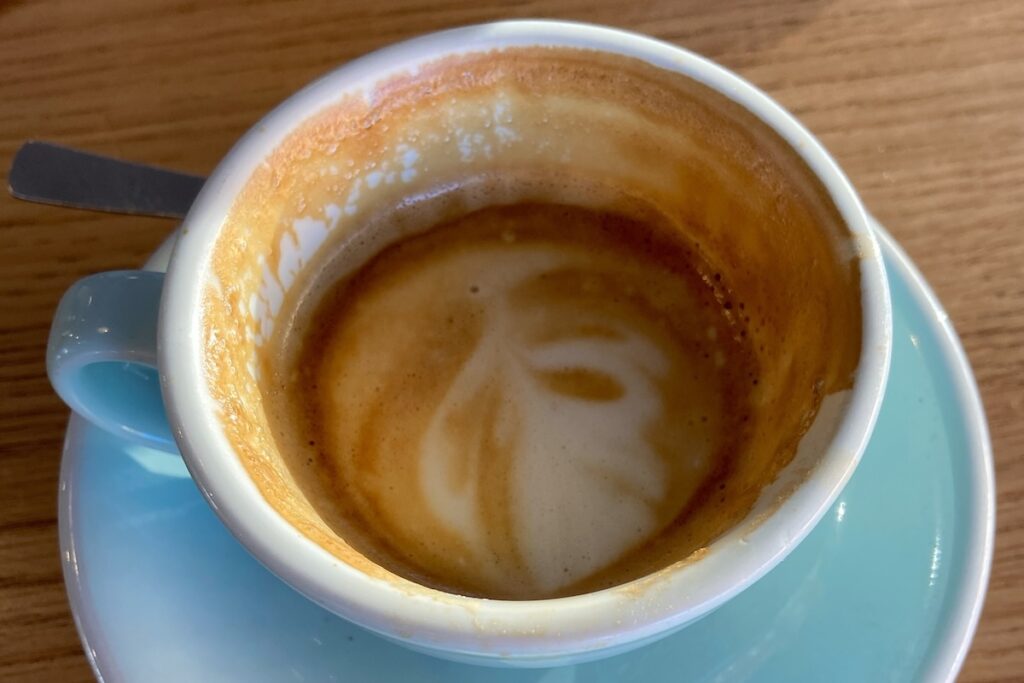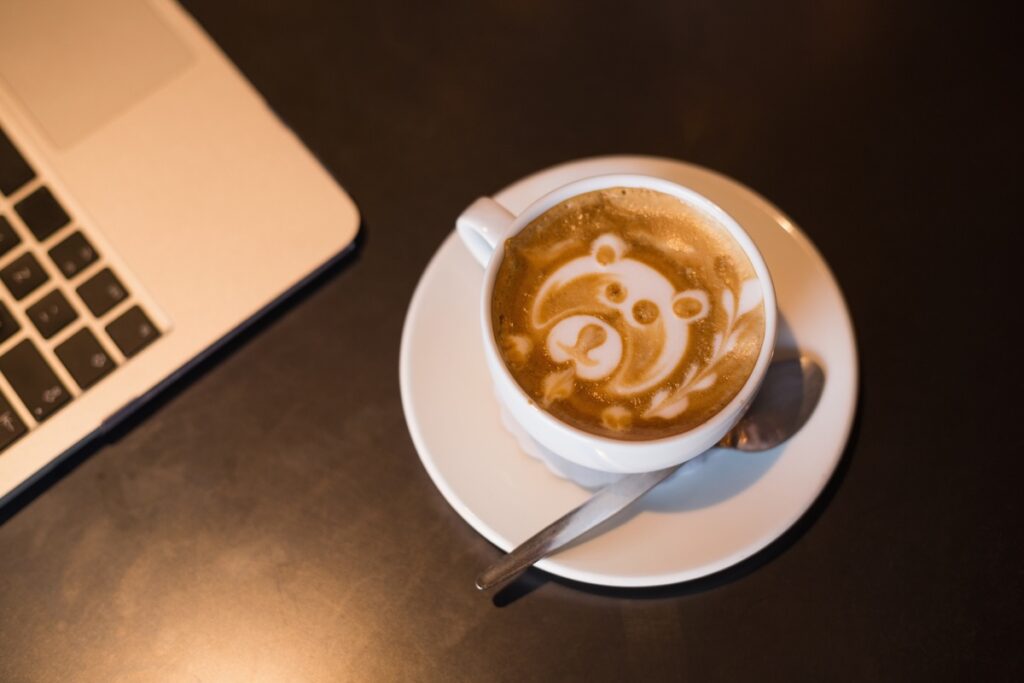Ever stood at the counter, eyeing the menu, and wondered what really separates a cappuccino from a flat white? The main thing is the milk—cappuccinos come with a thick, airy foam cap, and the drink itself is split evenly between espresso, steamed milk, and foam. Flat whites, on the other hand, are all about that smooth, dense microfoam that melts right into a double shot of espresso.
Both drinks start with espresso, but the texture and flavor? Totally different. Cappuccinos give you those classic, fluffy layers, while flat whites feel creamy and seamless from start to finish. The cappuccino has its roots in Italy and usually shows up in smaller cups. Flat whites, though, started in Australia and New Zealand and have their own twist.

Key Differences Between Cappuccino and Flat White
So, what’s really different about these two? It’s mostly about how much espresso and milk you get, the foam style, and the overall feel in your mouth.
Espresso and Milk Ratios
Cappuccinos usually stick to a 1:2 or 1:3 espresso-to-milk ratio. That means one part espresso, two or three parts milk.
Flat whites come out stronger, using a 1:1 ratio. Some shops might tweak it, but you’ll always get more espresso than you would in a cappuccino.
Most cappuccinos use just one espresso shot. Flat whites? They almost always have two, so they’re definitely the punchier pick.
Typical serving sizes:
- Cappuccino: 5-8 oz, less espresso
- Flat white: 6 oz, double espresso
That extra espresso in a flat white gives you more caffeine. If you need a wake-up, it’s the way to go.
Milk Foam vs. Microfoam
The foam is a big deal. Cappuccinos get a thick milk foam on top, so you can see the layers right away.
Flat whites use microfoam—tiny bubbles that blend into the milk. No layers, just smoothness.
Baristas usually make cappuccino foam with whole milk. The fat helps create that rich, thick cap that floats above the espresso.
For flat whites, they often reach for skim milk. It makes the microfoam silkier and lets it blend with the coffee. The foam’s much thinner than what you’ll find on a cappuccino.
This changes the taste, too. Cappuccino’s foam gives a sweet, creamy first sip. Flat white microfoam just lets the coffee flavor run through every mouthful.
Texture and Mouthfeel
How do these drinks feel? Pretty different, honestly. Cappuccinos have that layered thing going on—the foam stays on top, separate from the rest.
You’ll taste the foam first, then the milk and espresso. It’s a changing experience as you go.
Flat whites, though, are smooth all the way down. The microfoam mixes everything together, so each sip is pretty much the same.
Cappuccinos feel lighter and airier because of the foam. The whole milk adds a bit of richness, too.
Flat whites, meanwhile, feel velvety and a bit heavier. Skim milk keeps it less creamy, but the double espresso gives it more bite.
With flat whites, the texture just stays the same from start to finish. Cappuccinos change as you get through the layers.

Detailed Look at Cappuccino
The cappuccino’s a classic Italian espresso drink—one part espresso, one part steamed milk, one part thick foam. Those three layers and the strong coffee flavor have made it a favorite for years.
Classic Ingredients and Preparation
A traditional cappuccino sticks to the 1:1:1 ratio: espresso, steamed milk, milk foam. You start with a double shot of espresso.
The espresso base is about 2 ounces—bold and strong, just how Italians like it.
Next, you add 2 ounces of steamed milk, heated to around 150-160°F. Whole milk works best, honestly—it just gives a better texture.
The last step is 2 ounces of thick milk foam. A skilled barista will steam the milk until it’s dense and creamy, not bubbly or dry.
Good foam holds its shape and feels velvety, with tiny, even bubbles.
Traditional Serving Style
Baristas serve cappuccinos in small ceramic cups, usually 5-6 ounces. The cup size actually matters for the right balance.
In Italy, you’ll get your cappuccino hot, and you’re expected to drink it pretty quickly.
You’ll see three layers: espresso at the bottom, milk in the middle, foam on top.
Some baristas add simple latte art—hearts, leaves, that kind of thing.
The ceramic cup keeps the drink hot longer than paper. Always a plus on a cold morning.
Distinctive Flavor Profile
Cappuccinos have a strong coffee flavor since espresso is a third of the drink. The taste is bold and stands out.
The thick foam gives you a unique texture—each sip mixes liquid milk and creamy foam, so it’s never boring.
Because there’s less milk, the coffee flavor really pops. Cappuccinos are stronger than flat whites or lattes, for sure.
Steamed milk foam adds a bit of sweetness, even without sugar. That balances out the espresso’s bitterness nicely.
The contrast between hot espresso and cool foam makes each sip interesting. You get warmth and a lighter touch all at once.
Detailed Look at Flat White
The flat white mixes a double shot of espresso with steamed milk and just a little microfoam. It’s a 5-6 ounce drink that started out in Australia and New Zealand, and it’s all about that silky milk texture, not big foam.
Ingredients and Microfoam Technique
Classic flat whites use two espresso shots and 4-5 ounces of steamed milk. The trick is in the microfoam.
Your barista will make only 0.5 ounces of microfoam—way less than in a cappuccino. This thin layer just glides on top.
Whole milk works best for the steamed milk. The extra fat helps give the drink that signature smoothness.
Microfoam prep:
- Steam milk to 150-160°F
- Make fine, silky bubbles
- Pour right away to keep the texture
- Look for a glossy, almost paint-like finish
Some shops use ristretto shots for a sweeter, more concentrated espresso base. That pairs perfectly with the milk.
Modern Serving Approach
You’ll get your flat white in a 5-6 ounce ceramic cappuccino cup. Small size keeps it hot and keeps the flavor balanced.
Presentation is simple—no cinnamon or chocolate dust, just espresso and milk.
Traditional details:
- Ceramic cup and saucer
- No added sweeteners
- Served right after it’s made
- Maybe a bit of latte art, if you’re lucky
Specialty coffee shops usually stick to the Australia and New Zealand standards. They avoid the giant cups you see at big chains.
The drink’s surface stays smooth and clean—minimal foam, neat look.
Smooth Flavor Characteristics
The coffee flavor is bold in a flat white, thanks to the 1:3 espresso-to-milk ratio. You’ll notice more espresso than in bigger milk drinks.
The texture is creamy but liquid—no big foam cap. The milk adds sweetness but lets the coffee really come through.
Flavor profile:
- Bold espresso taste
- Smooth, velvety mouthfeel
- Natural milk sweetness
- Clean finish
With so little foam, the flavor stays consistent. No working your way through a thick cap—just straight to the good stuff.
The milk feels silky, not airy. So, the drink lands somewhere between a latte and a cappuccino—strong, but super smooth.
Temperature stays steady since there’s not much foam to insulate things. Every sip tastes just like the last.
Taste, Strength, and Caffeine Content
Flat whites pack a stronger coffee punch because of those double ristretto shots. Cappuccinos, meanwhile, go lighter on the coffee and heavier on the foam. Flat whites also edge out cappuccinos in caffeine, no matter the size.
Flavor Comparison
A flat white is all about intense coffee flavor. The double ristretto gives you a concentrated, focused taste. Since there’s more coffee than milk, every sip delivers that espresso hit.
Cappuccinos come off milder and sweeter. One espresso shot, plus equal parts steamed milk and foam, softens the flavor and brings a light, airy texture.
Milk prep changes things, too. Flat whites use microfoam that blends right in, while cappuccinos keep their thick, creamy foam on top. It really comes down to what you’re in the mood for—bold or balanced?
Caffeine Considerations
Flat whites have more caffeine than cappuccinos, no matter the size. That’s because they use double ristretto instead of a single espresso shot.
Here’s a quick caffeine breakdown:
| Size | Cappuccino | Flat White |
|---|---|---|
| 8 oz | 75 mg | 130 mg |
| 12 oz | 75 mg | 130 mg |
| 16 oz | 150 mg | 195 mg |
| 20 oz | 150 mg | 195 mg |
Ristretto shots are more concentrated than regular espresso. They use a 1:1 coffee-to-water ratio, while espresso uses 1:1.5.
If you want a serious caffeine kick, go for the flat white. If you’re after something a bit milder but still rich, a cappuccino will do the trick.
Serving Sizes and Presentation
Both drinks usually show up in 6-ounce cups, but they look pretty different. Flat whites get a wider, shallower cup, while cappuccinos come in smaller, deeper cups that really show off those foam layers.
Traditional Cup Sizes
Cappuccinos usually come in 5 to 6-ounce cups. This smaller size keeps the classic one-third espresso to two-thirds milk ratio in check.
With a compact serving, you get a more intense hit of espresso. Many specialty coffee shops love this size because it really lets the drink’s character shine through.
Flat whites stick to 5 to 6-ounce portions, too. Still, baristas tend to grab wider, shallower cups for flat whites.
The broad cup surface gives that signature “flat” look. It’s a style thing—it just feels smoother and more put-together.
Some coffee shops go bigger with both drinks. If you spot cappuccinos or flat whites over 6 ounces, you’re probably looking at a latte-style drink with a totally different milk texture.
Barista Techniques and Latte Art
The flat white’s smooth milk surface just begs for latte art. Baristas can pour striking designs—hearts, leaves, maybe even a rosetta if they’re feeling bold.
Minimal foam means baristas get more control as they pour. You end up with patterns that look sharp and clean in the cup.
Cappuccinos, on the other hand, make latte art trickier. Old-school cappuccinos had such thick, stiff foam that pouring any kind of design just didn’t work.
Now, “wet” cappuccinos use softer foam, so you can try some latte art. Still, the texture isn’t quite as smooth as what you get with a flat white.
You’ll often see baristas sprinkle cocoa powder or cinnamon over cappuccinos. It looks nice—and honestly, it goes well with that light, airy foam.
Every espresso-based drink comes with its own pouring style. Flat whites need a steady, careful pour, while cappuccinos turn out better when you really aerate the milk.